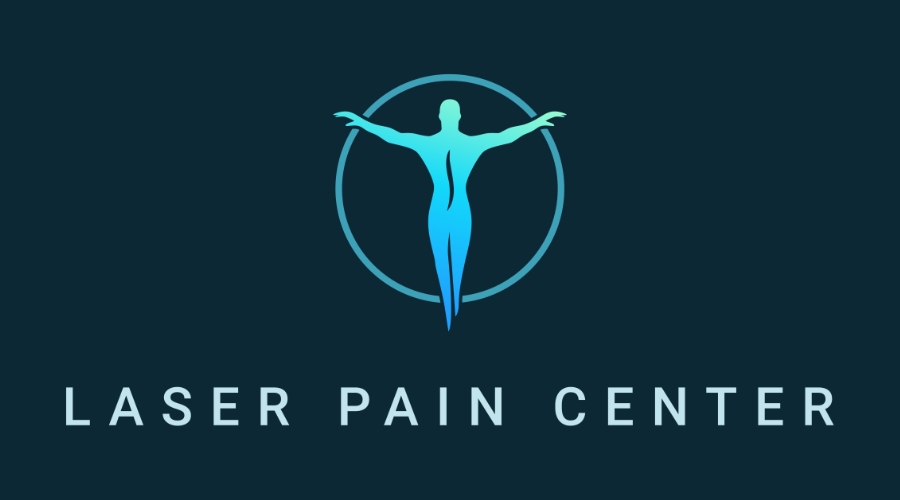For people experiencing chronic pain, finding reliable, at-home pain relief management strategies can make a world of difference. While professional treatments are invaluable, simple adjustments to your lifestyle and environment can complement these interventions. By incorporating practices like gentle stretching, dietary adjustments, and alternative therapies into your daily routine, you can build a foundation for advanced pain management that aids in back pain relief, relief for peripheral neuropathy, and overall pain management. Here’s how:
1. Incorporate Gentle Stretching and Mobility Exercises Daily
Regular stretching can play a significant role in reducing pain, stiffness, and discomfort. Stretching improves blood flow to muscles and tissues, helps maintain flexibility, and supports long-term mobility—all essential for effective pain relief management. For those experiencing lower back pain or chronic back pain, stretches targeting the lumbar region, such as child’s pose, pelvic tilts, and hamstring stretches, can alleviate tension and prevent stiffness from developing.
In addition to stretching, consider incorporating light yoga or tai chi, both known to enhance flexibility and reduce pain levels in those with chronic pain.
Pro Tip: Set aside at least 10–15 minutes each morning and evening to stretch, focusing on problem areas, and use controlled, deep breathing to maximize relaxation.
2. Prioritize Proper Posture for Lasting Pain Relief
Maintaining good posture isn’t just about sitting up straight; it’s a crucial part of managing and preventing chronic pain. Poor posture can exacerbate back and neck pain, leading to added stress on muscles and joints. Proper alignment, however, reduces strain on the spine and can provide relief for those with chronic neck, shoulder, or back pain. Small adjustments, like keeping your shoulders relaxed, your feet flat on the ground, and your core engaged, can make a big difference.
If your work involves extended hours at a desk, consider an ergonomic chair or a lumbar support cushion. Position your monitor at eye level to prevent neck strain, and keep your feet flat on the floor.
Pro Tip: Set an hourly reminder to check your posture. A quick 30-second stretch or realignment can prevent discomfort from developing.
3. Stay Hydrated to Support Muscle and Joint Health
Hydration is often overlooked but is essential in advanced pain management. Dehydration can lead to increased inflammation and muscle stiffness, which can worsen chronic pain conditions. Water helps transport nutrients to your muscles and flushes out toxins, reducing the likelihood of muscle cramps and soreness.
Aim for at least eight glasses of water daily, more if you’re physically active. For added hydration, consume water-rich fruits like watermelon and cucumbers.
Pro Tip: Start your day with a glass of water before coffee or tea. Keeping a water bottle within reach throughout the day can also serve as a reminder to stay hydrated.
4. Adopt a Nutrient-Rich, Anti-Inflammatory Diet
An anti-inflammatory diet can make a significant difference in managing chronic pain. Nutrient-dense foods reduce inflammation and provide essential vitamins and minerals that support joint, bone, and muscle health. Foods rich in omega-3 fatty acids, such as salmon, walnuts, and chia seeds, help reduce inflammation and may provide pain relief for back pain, joint pain, and muscle soreness. Adding turmeric, ginger, and garlic to your meals can also support pain relief management.
Limit processed foods, as they often contain sugars and unhealthy fats that can increase inflammation and worsen chronic pain symptoms.
Pro Tip: Plan meals with plenty of greens, lean proteins, and healthy fats. Preparing meals ahead of time can make it easier to stick to an anti-inflammatory diet.
5. Use Heat and Cold Therapy to Manage Pain Effectively
Applying heat or cold packs is a proven method to manage the pain effectively. Heat therapy can relax tight muscles, increase blood circulation, and is beneficial for chronic pain conditions like arthritis or back pain. Cold therapy reduces inflammation and numbs areas of acute pain, making it ideal for recent injuries or flare-ups in chronic pain conditions. Both therapies are non-invasive, easy to apply, and can provide immediate relief.
Pro Tip: Alternate between hot and cold therapy for better results, applying each for 15–20 minutes. Use heat therapy in the morning to alleviate stiffness, and cold therapy after physical activity.
6. Engage in Low-Impact Physical Activities for Pain Management
Physical activity may seem counterintuitive for pain relief, but low-impact exercises like walking, swimming, or cycling can significantly reduce chronic pain over time. Exercise increases endorphin production, the body’s natural pain relievers, and enhances muscle strength and flexibility, which reduces strain on painful areas. For people dealing with peripheral neuropathy or back spine pain relief, engaging in gentle, regular movement is essential for long-term health.
Pro Tip: Aim for 30 minutes of light exercise, like a brisk walk or swimming, at least three times a week. Start slowly, and gradually increase the duration and intensity as you feel comfortable.
7. Practice Mindfulness and Relaxation Techniques Daily
Stress and anxiety can worsen pain perception, making relaxation practices crucial to advanced pain management. Techniques such as mindfulness meditation, deep breathing, and progressive muscle relaxation teach your body to release tension. This can help reduce chronic pain associated with stress, including jaw clenching, neck pain, and back pain. By focusing on relaxation, you can improve pain relief management.
Pro Tip: Set aside 10 minutes daily for mindfulness practice. Guided meditation apps like Headspace or Calm offer structured sessions for beginners, making it easier to stick to a daily routine.
8. Optimize Your Sleep Environment for Pain Relief
Chronic pain can make restful sleep challenging, but quality sleep is essential for pain management and healing. To improve sleep, create a dark, quiet, and cool environment. Invest in a supportive mattress and pillow, as proper spinal alignment during sleep reduces pressure on painful areas. Sleep hygiene habits, like maintaining a consistent bedtime and avoiding screens an hour before bed, can also help.
Pro Tip: Keep a journal by your bed to write down any worries before sleeping, allowing your mind to relax more easily.
9. Limit Caffeine and Alcohol Intake
Both caffeine and alcohol can interfere with sleep quality, increase anxiety, and contribute to inflammation, worsening chronic pain symptoms. Reducing caffeine consumption, especially after noon, and limiting alcohol intake can lead to improved sleep and overall pain relief management.
Pro Tip: If reducing caffeine intake is difficult, switch to herbal teas that have calming, anti-inflammatory effects, like chamomile or peppermint.
10. Consider Adding Laser Therapy to Your Pain Management Routine
Laser therapy is an advanced, non-invasive option for chronic pain relief management. The concentrated light used in laser therapy penetrates the skin to reduce inflammation, promote healing, and reduce nerve pain, making it especially helpful for conditions like peripheral neuropathy, back pain, and arthritis. This therapy is a safe and effective complement to other pain management practices and can significantly reduce pain over time.
Pro Tip: Consult with a pain doctor specializing in laser therapy to discuss whether it’s a good fit for your condition. Laser therapy sessions can often be scheduled weekly and are designed to complement your current treatment.
Taking a Holistic Approach to Pain Relief Management
Living with chronic pain can be challenging, but by incorporating these 10 simple changes into your daily routine, you can build a sustainable approach to managing pain relief at home. Small adjustments in daily habits, combined with advanced pain management techniques, can make a significant difference in your comfort and well-being.
Effective pain relief management is about consistency, patience, and a holistic approach, focusing on long-term health and relief rather than just short-term solutions.
Follow us on social media!

Request Consultation
For people experiencing chronic pain, finding reliable, at-home pain relief management strategies can make a world of difference. While professional treatments are invaluable, simple adjustments to your lifestyle and environment can complement these interventions. By incorporating practices like gentle stretching, dietary adjustments, and alternative therapies into your daily routine, you can build a foundation for advanced pain management that aids in back pain relief, relief for peripheral neuropathy, and overall pain management. Here’s how:
1. Incorporate Gentle Stretching and Mobility Exercises Daily
Regular stretching can play a significant role in reducing pain, stiffness, and discomfort. Stretching improves blood flow to muscles and tissues, helps maintain flexibility, and supports long-term mobility—all essential for effective pain relief management. For those experiencing lower back pain or chronic back pain, stretches targeting the lumbar region, such as child’s pose, pelvic tilts, and hamstring stretches, can alleviate tension and prevent stiffness from developing.
In addition to stretching, consider incorporating light yoga or tai chi, both known to enhance flexibility and reduce pain levels in those with chronic pain.
Pro Tip: Set aside at least 10–15 minutes each morning and evening to stretch, focusing on problem areas, and use controlled, deep breathing to maximize relaxation.
2. Prioritize Proper Posture for Lasting Pain Relief
Maintaining good posture isn’t just about sitting up straight; it’s a crucial part of managing and preventing chronic pain. Poor posture can exacerbate back and neck pain, leading to added stress on muscles and joints. Proper alignment, however, reduces strain on the spine and can provide relief for those with chronic neck, shoulder, or back pain. Small adjustments, like keeping your shoulders relaxed, your feet flat on the ground, and your core engaged, can make a big difference.
If your work involves extended hours at a desk, consider an ergonomic chair or a lumbar support cushion. Position your monitor at eye level to prevent neck strain, and keep your feet flat on the floor.
Pro Tip: Set an hourly reminder to check your posture. A quick 30-second stretch or realignment can prevent discomfort from developing.
3. Stay Hydrated to Support Muscle and Joint Health
Hydration is often overlooked but is essential in advanced pain management. Dehydration can lead to increased inflammation and muscle stiffness, which can worsen chronic pain conditions. Water helps transport nutrients to your muscles and flushes out toxins, reducing the likelihood of muscle cramps and soreness.
Aim for at least eight glasses of water daily, more if you’re physically active. For added hydration, consume water-rich fruits like watermelon and cucumbers.
Pro Tip: Start your day with a glass of water before coffee or tea. Keeping a water bottle within reach throughout the day can also serve as a reminder to stay hydrated.
4. Adopt a Nutrient-Rich, Anti-Inflammatory Diet
An anti-inflammatory diet can make a significant difference in managing chronic pain. Nutrient-dense foods reduce inflammation and provide essential vitamins and minerals that support joint, bone, and muscle health. Foods rich in omega-3 fatty acids, such as salmon, walnuts, and chia seeds, help reduce inflammation and may provide pain relief for back pain, joint pain, and muscle soreness. Adding turmeric, ginger, and garlic to your meals can also support pain relief management.
Limit processed foods, as they often contain sugars and unhealthy fats that can increase inflammation and worsen chronic pain symptoms.
Pro Tip: Plan meals with plenty of greens, lean proteins, and healthy fats. Preparing meals ahead of time can make it easier to stick to an anti-inflammatory diet.
5. Use Heat and Cold Therapy to Manage Pain Effectively
Applying heat or cold packs is a proven method to manage the pain effectively. Heat therapy can relax tight muscles, increase blood circulation, and is beneficial for chronic pain conditions like arthritis or back pain. Cold therapy reduces inflammation and numbs areas of acute pain, making it ideal for recent injuries or flare-ups in chronic pain conditions. Both therapies are non-invasive, easy to apply, and can provide immediate relief.
Pro Tip: Alternate between hot and cold therapy for better results, applying each for 15–20 minutes. Use heat therapy in the morning to alleviate stiffness, and cold therapy after physical activity.
6. Engage in Low-Impact Physical Activities for Pain Management
Physical activity may seem counterintuitive for pain relief, but low-impact exercises like walking, swimming, or cycling can significantly reduce chronic pain over time. Exercise increases endorphin production, the body’s natural pain relievers, and enhances muscle strength and flexibility, which reduces strain on painful areas. For people dealing with peripheral neuropathy or back spine pain relief, engaging in gentle, regular movement is essential for long-term health.
Pro Tip: Aim for 30 minutes of light exercise, like a brisk walk or swimming, at least three times a week. Start slowly, and gradually increase the duration and intensity as you feel comfortable.
7. Practice Mindfulness and Relaxation Techniques Daily
Stress and anxiety can worsen pain perception, making relaxation practices crucial to advanced pain management. Techniques such as mindfulness meditation, deep breathing, and progressive muscle relaxation teach your body to release tension. This can help reduce chronic pain associated with stress, including jaw clenching, neck pain, and back pain. By focusing on relaxation, you can improve pain relief management.
Pro Tip: Set aside 10 minutes daily for mindfulness practice. Guided meditation apps like Headspace or Calm offer structured sessions for beginners, making it easier to stick to a daily routine.
8. Optimize Your Sleep Environment for Pain Relief
Chronic pain can make restful sleep challenging, but quality sleep is essential for pain management and healing. To improve sleep, create a dark, quiet, and cool environment. Invest in a supportive mattress and pillow, as proper spinal alignment during sleep reduces pressure on painful areas. Sleep hygiene habits, like maintaining a consistent bedtime and avoiding screens an hour before bed, can also help.
Pro Tip: Keep a journal by your bed to write down any worries before sleeping, allowing your mind to relax more easily.
9. Limit Caffeine and Alcohol Intake
Both caffeine and alcohol can interfere with sleep quality, increase anxiety, and contribute to inflammation, worsening chronic pain symptoms. Reducing caffeine consumption, especially after noon, and limiting alcohol intake can lead to improved sleep and overall pain relief management.
Pro Tip: If reducing caffeine intake is difficult, switch to herbal teas that have calming, anti-inflammatory effects, like chamomile or peppermint.
10. Consider Adding Laser Therapy to Your Pain Management Routine
Laser therapy is an advanced, non-invasive option for chronic pain relief management. The concentrated light used in laser therapy penetrates the skin to reduce inflammation, promote healing, and reduce nerve pain, making it especially helpful for conditions like peripheral neuropathy, back pain, and arthritis. This therapy is a safe and effective complement to other pain management practices and can significantly reduce pain over time.
Pro Tip: Consult with a pain doctor specializing in laser therapy to discuss whether it’s a good fit for your condition. Laser therapy sessions can often be scheduled weekly and are designed to complement your current treatment.
Taking a Holistic Approach to Pain Relief Management
Living with chronic pain can be challenging, but by incorporating these 10 simple changes into your daily routine, you can build a sustainable approach to managing pain relief at home. Small adjustments in daily habits, combined with advanced pain management techniques, can make a significant difference in your comfort and well-being.
Effective pain relief management is about consistency, patience, and a holistic approach, focusing on long-term health and relief rather than just short-term solutions.



